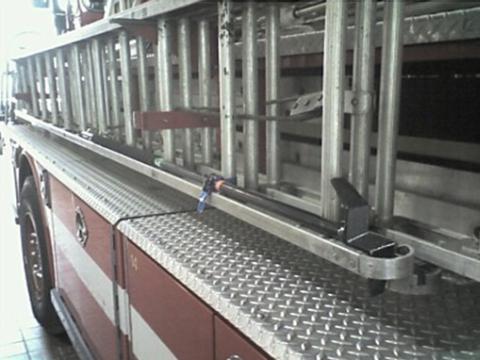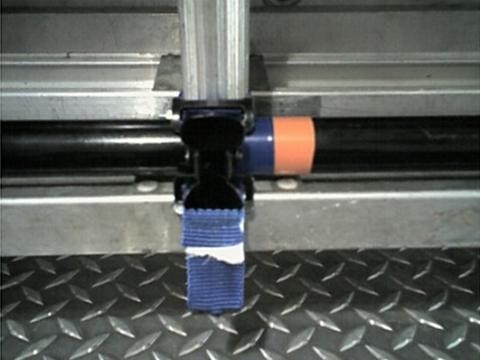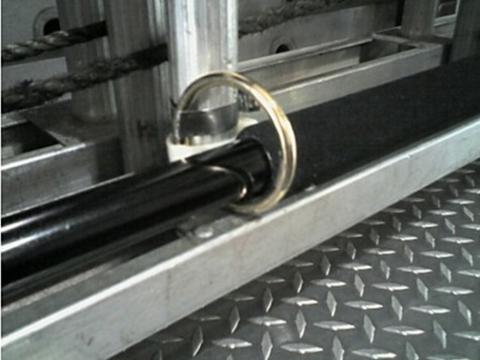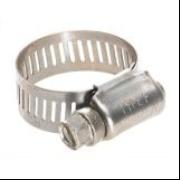
Hook & Ladder 2
Joe Brown from DCFD Truck Company 17 sent in this tip that works well for truck companies with side mounted ladders. Although we have another version on the site , the first time Joe saw hooks mounted to the ladder came from several DCFD's mid-city truck companies. He noticed it on DCFD Truck Companyís 4 (Shaw) and 6 (Columbia Heights). These companies utilized a design that used two spring loaded clips, one on the tip of the hook and another towards the bottom. The crew from Truck 17 expanded on the original idea and came up with what they feel is the quickest, most efficient way so far. Joe said that if they see something better, they will adjust. He went on to say that he feels that it should be the nature of all companies out there; any good company should be a combination of the best ideas from others around the nation tailored to the individual needs and response area of the company.
The most important thing is that you donít just borrow an idea; you have to train with it, practice, put it through the works and make sure its right for your area and company personnel.

The 24ft and 30ft ladders mounted on the sides of the apparatus both received ceiling hooks securely mounted to the tip. The tip of the hook slides snuggly through the opening in the tip plate of the ladder as shown above. The hooks are secured at the top by a webbing strap with tension clip. This clip is large enough to be depressed while wearing structural firefighting gloves and the metal clip has been bent around the shape of the hook so it may be firmly tightened against the ladder when reattaching as shown below.

The clip's webbing is trimmed to a length that allows for it to be tightened easily, but not so long that it takes additional effort when attempting to deploy the hook. Also, as apposed to placing the strap on the very tip of the ladder, theirs is placed on the second rung from the tip. This allows the firefighter to remove the hook well below from the broken glass and fire conditions that may be present at the ladder tip.
The hooks are secured at the bottom by a fixed metal ring as shown below; this allows for ease of use during firefighting operations, one strap is faster (and easier) then two. The large metal ring is known as a bull-ring and can be found at many hardware or tractor supply stores.

Both the strap and the bull ring are secured to the ladder rung utilizing a slotted worm drive clamp as shown below. By using this design it can be securely tightened without compromising the ladder construction and can easily be removed when the ladder goes out for repairs.

Another thing to think about with this design is actual hook selection based on common tasks assigned to each ladder. Truck 17's 24 foot ladder is thrown by the hook-and-can man. This ladder receives a metal 6-foot New York Roof style hook, they feel its weight is better suited for removing window frames and sashes for vent-enter-search operations. The firefighterís free hand (once used to carry the hook) is now utilized to carry the water can for search protection; some members also combine a Halligan bar to their VES tools (depending on firefighter skill and search preference). This entire set up is easily installed or removed in minutes, causes no structural compromise to the ladder and best of all can be completed with $10 or less.
The following are operational instructions posted after the new set up was installed on DCFD Truck Company 17.
Operation:
Throw ladder to proper placement for ventilation, ascend to tip of ladder and depress clip (note: do not just jerk up on the hook, not only is this a waste of time but it also may damage the straps), slide hook towards tip of the ladder so as not to bind the metal ring, once clear of the ring complete ventilation maneuver.
Post incident: Slide bottom end of hook through metal ring, place tip of the hook back through tip section of the ladder, secure webbing strap around top of hook so that round metal fits firmly around hook, place ladder back on the apparatus on correct side.
A special thanks goes out to Joe Brown and the DCFD Truck 17 crew for sharing this tip, and of course to DCFD's Trucks 4 & 6 who gave 17 the original idea to improve upon.